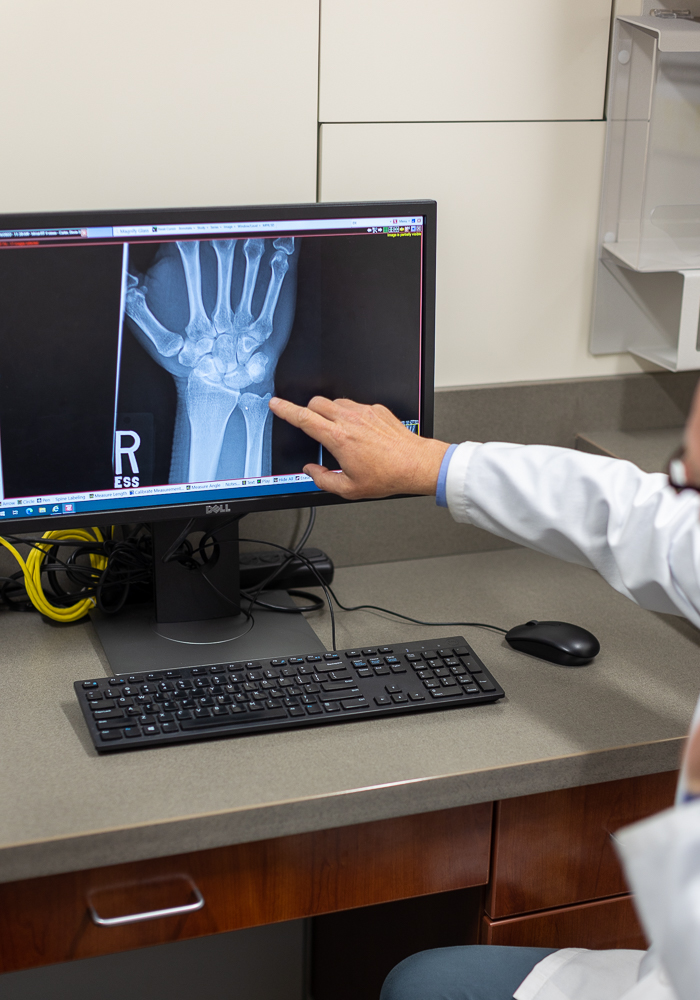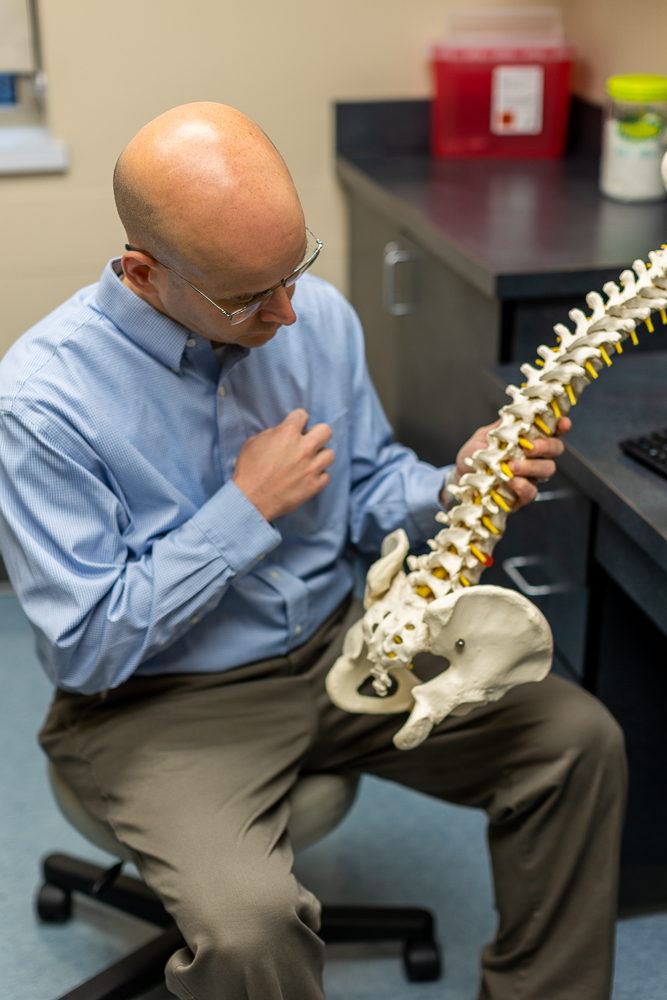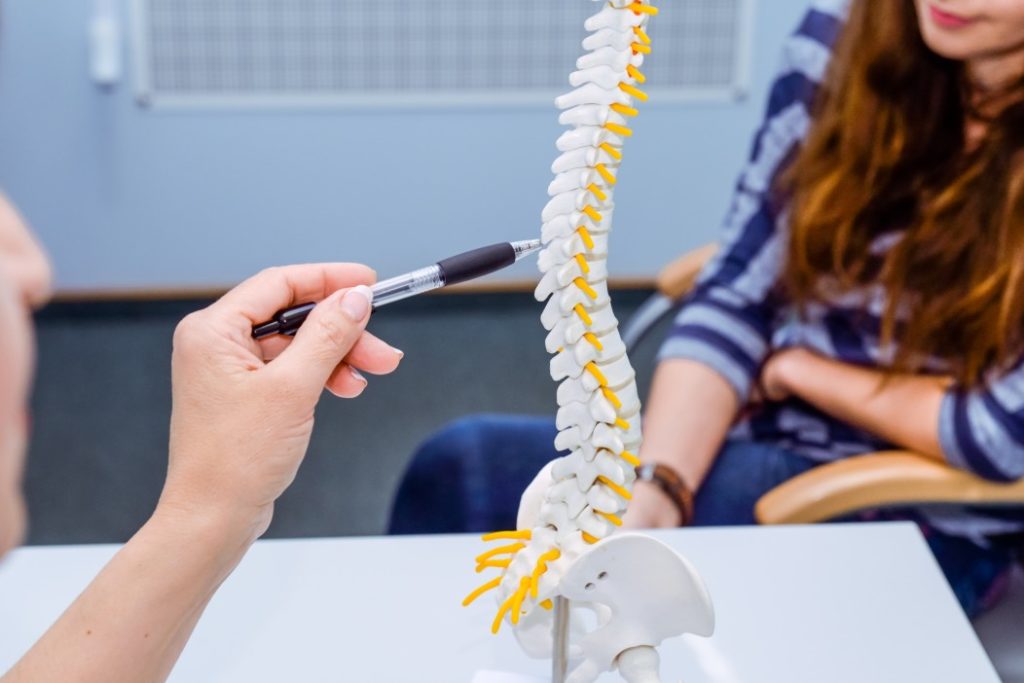
Your hands and wrists are both complex structures. In addition to 27 bones in each hand and 8 in each wrist, there are a number of tendons, ligaments, joints, and muscles that all need to function in complete unison.
The vast majority of us use our hands and wrists every day for hundreds of different purposes, often without even realizing it. On one level, it’s fascinating to think about how all of these small parts work together to allow us to perform everyday tasks. The flipside, however, is that all of these different parts mean there’s a higher opportunity for something to go wrong.
Even just one injury to a single one of these structures can make a once routine task incredibly difficult. The providers at Kansas City Orthopedic Alliance have witnessed this first hand, and we’re here to help! Read on to learn about some common hand and wrist injuries, how to prevent them, and treatments that a wrist and hand doctor in Kansas City can provide.
Common Hand & Wrist Injuries
The physical demands we place on our hands and wrists vary from person to person. Some people are more active than others, and some people have occupations that inherently put them in harm’s way. While some have higher injury risks due to their lifestyle, the unfortunate reality is that injuries can happen to anyone at any time—no matter how many precautions they take.
Multiple structures compose the hand and wrist complex. Tendons connect the muscles to the bones, so that the structure moves when the muscles contract. Ligaments help connect the bones and hold the complex in its correct position. Arteries and veins supply critical blood flow to the area. Nerves provide sensation and the signals for muscles to contract. Any of these structures can be the cause for pain or dysfunction.
Broadly speaking, patients can suffer from two different injuries at the hand and wrist: acute and chronic.
Acute Hand & Wrist Injuries
An acute injury occurs when someone has sudden trauma to the area, generally as a result of some sort of physical activity. In these instances, people tend to notice a strong and immediate pain in the area. This may lead them to seek immediate treatment from a wrist and hand doctor in Kansas City. Some of the most common acute injuries include:
- Fractures
- Sprains, Strains, & Tears
- Dislocations
- Bruises
- Nail bed injuries
- Jammed fingers
- And more
Because of their sudden nature, there’s more randomness associated with acute injuries. Events like falling, twisting, or forcible trauma—some of the most common causes of acute injuries—aren’t usually predictable events. This makes preventing acute injuries much more challenging.
One of the primary factors that affects your risk of acute hand and wrist injuries is your activity level. There’s no question that regular physical activity is important for maintaining a healthy lifestyle. If you have a very active lifestyle or participate in a labor-intensive career, it puts you at higher risk for an acute hand and wrist injury.
Chronic Hand & Wrist Injuries
Chronic injuries fall on the other end of the spectrum from acute ones. Chronic hand and wrist conditions don’t usually stem from a single, specific incident. Rather, they develop gradually and can become more painful and severe over time.
While people experience more intense pain from acute injuries, that pain is ultimately what drives them to seek immediate treatment from a wrist and hand doctor in Kansas City. Chronic injuries, meanwhile, tend to cause a level of pain that’s more tolerable by comparison. This leads many to think that their injuries aren’t a big deal, and that they’ll eventually heal on their own.
Chronic hand and wrist injuries develop from repetitive trauma to bones, tendons, and joints. How that trauma occurs can vary, however. Some people may have previously suffered an injury in the area that failed to properly heal. In cases like these, the tissues continue to degenerate and lead to more serious conditions, such as osteoarthritis.
In other instances, people can develop a chronic condition due to years of repeated motions and overuse of a specific body part. Certain careers and hobbies can exacerbate these problems and cause issues like inflammation or stress fractures.
For instance, someone who writes for their career or plays tennis every day has a particularly high risk of developing chronic hand and wrist injuries. The repeated motions put stress on particular areas of the extremities, which can create a muscle imbalance. Additionally, poor technique with these motions can add even more stress and increase the injury’s severity.
Some common chronic hand and wrist injuries include:
- Tendonitis
- Carpal Tunnel Syndrome
- Arthritis
- Osteoarthritis
- Trigger Finger
- Joint pain & stiffness
- And more
Preventing Hand & Wrist Injuries
As we’ve mentioned, there’s no way for a person to completely prevent every possible hand or wrist injury out there. Each person has their own unique lifestyle, activities, genetics, and medical history. This means that everyone carries a different level of risk for certain acute or chronic conditions.
Additionally, the exact measures needed to help prevent hand and wrist injuries will vary depending on your specific situation. For instance, a basketball player and a computer programmer both carry inherent risk for hand and wrist injuries due to the physical requirements placed on their wrist and hands.
There are broader prevention methods that you can utilize regardless of your career and activity level. Below are some tips from a hand doctor in Kansas City at KCOA:
Use Correct Gear
Having the right protective equipment can greatly reduce injury risk. Wearing a well-padded, well-fitting pair of gloves or wrist guards can help you lessen, or even avoid, impact from an acute injury while on the job or on the field.
If you sit in a stationary position for most of your day, consider purchasing some equipment that helps improve your hand and wrist posture. One of the most popular items in this category are ergonomic keyboards. Taking steps to improve your posture and technique can help you avoid repeated stress and inflammation in the area.
Improve Your Bone Strength
Good bone strength helps tremendously with reducing the symptoms and effects of hand and wrist injury. One of the best ways to improve your bone strength is by consuming more calcium in your diet, roughly 1,000-1,200mg per day depending on your age.
Your bones naturally start to become more brittle as you age, and because your body doesn’t naturally produce calcium, it makes a calcium-rich diet all the more important. Not only does calcium improve bone strength, however, it also helps improve blood circulation and muscle control!
Stay Hydrated & Stretch Regularly
What does water have to do with injury prevention? More than you might think! Your body needs water to function properly, and that includes your hands and wrists. Dehydration can lead to issues such as muscle fatigue and tendonitis, while drinking proper amounts of water can improve joint health.
Similarly, stretching is as important for your hands and wrists as it is for your whole body. Stretching periodically throughout the day can help your muscles and joints maintain their proper flexibility and range of motion, while preventing tightness and weakness.
Minimize Potential Hazards
Some acute injuries in particular are just bad luck. We can’t control what other people will do, and there’s only so much you can change about the world around you. However, there are several small steps that you can do to help minimize risk in your daily life. Some examples from our hand doctor in Kansas City include:
- Minimizing your distractions, so that you can maintain focus on your surroundings
- Be careful when shutting doors. windows, etc., and make sure that your hands/wrists are clear of potential contact.
- Wear well-fitting protective gear like gloves, when working in situations where the risk for hand and wrist injuries is higher.
- Hold your hand away from potential dangers (like when cutting food or using power tools).
- Install rails and bars where necessary to reduce the risk of falls in your home.
- In the event you do start to fall, try to avoid falling on your outstretched hand. Lean into the fall to give yourself control and try to fall sideways into the softest area possible.
Treatment Options
Above all else, the most important thing someone can do if they have a hand or wrist injury is seek treatment. Not only for a particularly painful acute injury, but for chronic pain as well. Even if the pain is relatively tolerable now, allowing your injury to linger can lead to more severe pain and more extensive damage in the future.
With a full team of highly experienced providers and the most advanced treatment technology, KCOA can provide both an accurate diagnosis and a personalized treatment plan. In order to identify the most effective treatment for your needs, you’ll first meet with a wrist and hand doctor in Kansas City for an initial appointment.
During your appointment, we’ll discuss your medical history, symptoms, and desired long-term outcome. Based on the extent of your symptoms and additional factors, we’ll offer a specific treatment recommendation. We use a collaborative approach throughout the process, which heavily utilizes input from both you and your loved ones.
Our providers maintain a commitment to exploring all conservative and non-surgical treatment options before recommending hand or wrist surgery. Though we have a number of Board Certified orthopedic hand surgeons on staff, we find that most patients experience successful outcomes without an invasive procedure.
Our hand and wrist treatments include:
- Wrist Arthroscopy
- Carpal Tunnel Release
- Trigger Finger A1 Pulley Release
- Cyst Removal
- Therapeutic Injections
- Fracture Management
- Sports medicine treatments
- Physical medicine & rehabilitation
- And orthobiologic treatments
Searching for a Wrist or Hand Doctor in Kansas City? Contact KCOA Today!
At Kansas City Orthopedic Alliance, we’re dedicated to creating a superior patient experience for all. Regardless of the location or severity of your injury, our team will work with you to ensure the best possible outcome.
Request an appointment with one of our providers to find the best treatment option for your needs. Offering advanced technology and a highly experienced team, our hand and wrist specialists can help pinpoint the exact cause of your issues. And once we’ve found the cause, we can enact a treatment plan that helps you return to pain-free living.
For a thorough evaluation, call us at (913) 319-7600 or use our symptom tracker tool. Have any additional questions or comments? Feel free to fill out our contact form and a representative will reach out to you as soon as we’re able.


